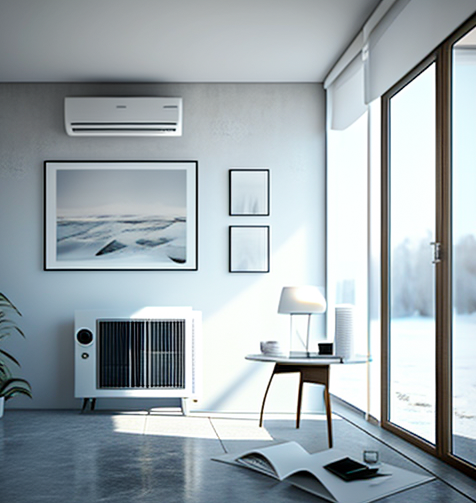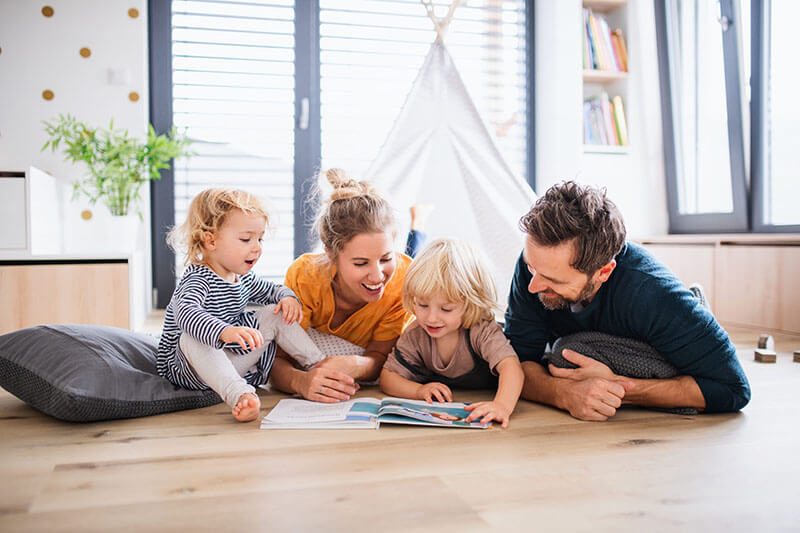What’s The Difference Between A Packaged Unit And A Rooftop Unit?
The distinction between a packaged unit and a rooftop unit is an important one for those considering installing HVAC systems in their homes or businesses.
Packaged units are pre-assembled heating, cooling, and ventilation systems that take up less space than traditional HVAC systems.
Rooftop units consist of individual components that must be assembled on the roof of a structure before they can be used to heat and cool the interior spaces below.
Understanding the differences between these two types of HVAC systems will help ensure that consumers make informed decisions when selecting the right system for their needs.
The purpose of this article is to explore each type of system in detail, with special attention being given to key features such as cost, installation requirements, energy efficiency ratings, maintenance needs and noise levels.
This information will enable readers to determine which type of HVAC system best meets their specific needs while ensuring they get maximum value from their investment.
Cost Considerations
When budgeting for an air conditioning system, it is important to consider the differences between a packaged unit and a rooftop unit.
The most significant difference in terms of cost consideration is the installation process: while a packaged unit can be installed on the ground outside or inside of your home with minimal effort, having a rooftop unit professionally installed will require additional time and money as access to the roof must be provided.
In addition, purchasing a rooftop unit typically requires more preparation than that of a packaged unit due to its size and weight; this could add up to higher overall costs.
In comparison, both types of units offer similar levels of energy efficiency when properly maintained. However, depending on the climate where you live and your individual needs, one type may prove more beneficial than another – requiring further research into available models before making a purchase decision.

Additionally, if you are looking at installing multiple systems throughout your home or commercial space, then opting for either type of pre-packaged system might make economic sense as they tend to come in larger packs which could help save some money over buying each piece separately.
Ultimately, considering all factors involved with both types of units can help ensure that you select the best option within your budget constraints.
Installation Requirements
Installing a packaged unit or rooftop unit requires careful planning and execution. The installation process should comply with established safety standards in order to minimize risk of injury or property damage. Installation time varies depending on the size, type, and complexity of the unit being installed; however, it typically takes anywhere from four to eight hours for a trained technician to install either system properly.
Proper preparation is also essential when installing a packaged unit or rooftop unit. Prior to starting the installation process, all necessary components must be inspected and verified as being up-to-date according to industry specifications.
Additionally, special attention must be given to ensure that the chosen location is suitable for supporting the weight of the entire system without compromising structural integrity. To further reduce potential damages during installation, additional supports may need to be added if required by local building codes and regulations.
Energy Efficiency Ratings
In order to make informed decisions when selecting a heating and cooling system, it is important to understand the differences between packaged units and rooftop units.
Packaged unit systems are typically installed outside of the building they serve while rooftop units must be mounted on the roof of a structure or in an attic space.
While both types of systems provide similar heating and cooling capabilities, there are some key differences that should be taken into account.
The main difference between these two systems lies in their energy efficiency ratings.
Rooftop units tend to have higher energy efficiency standards than packaged units due to the fact that the former can usually take advantage of external air temperatures more effectively than the latter.
As such, operating costs for rooftop systems may be lower than those associated with packaged units.
Additionally, since packaged units are exposed to elements like wind, rain, snow and ice, they require more frequent maintenance compared to rooftop units which remain sheltered from environmental conditions.
Maintenance Needs
The maintenance needs of packaged units and rooftop units have significant implications for the safety and air quality of any given space. It is essential to understand the differences between these two types of systems in order to ensure that they are correctly maintained throughout their lifespan.
Packaged units are typically larger than rooftop units, making them more difficult to access during routine service checks. The installation process also requires extra attention to detail when compared with a rooftop unit due to the complexity involved in connecting all components within the system.
On the other hand, most rooftop units contain fewer parts, meaning that maintenance can often be performed quickly and easily without requiring extensive technical knowledge or lengthy servicing times. Additionally, since rooftop units are exposed to outside elements, regular inspections should be carried out to check for signs of corrosion or damage caused by weather conditions such as high winds or extreme temperatures.
Both types of systems should always be serviced according to manufacturer guidelines in order to maintain peak performance levels and reduce repair costs over time. Good maintenance practices not only ensure high-quality air circulation but also minimize the risk of potentially hazardous situations arising from system failure or inadequate upkeep.
Regularly scheduled cleaning services will help extend the life expectancy of both packaged and rooftop units while minimizing energy consumption and promoting healthy indoor air quality standards.
Noise Levels
Sound is a major factor that affects the enjoyment of living or working in any space. It is thus important to consider noise control and soundproofing when selecting between packaged units and rooftop units.
Packaged units are typically enclosed in an insulated steel cabinet, which can help dampen much of the noise generated by the unit’s operation. Rooftop units, on the other hand, have no such insulation or enclosure; they usually take up less roof area than their packaged counterparts but make significantly more noise during operation due to their open design.
To address this problem, some manufacturers offer optional acoustic blankets for installation around rooftop units to reduce their noise output. The use of these blankets could be a deciding factor if reducing operating noise levels is critical for your application.
Ultimately, both types of systems offer advantages and disadvantages with regards to sound control, so it is important to weigh all factors before making a decision about which type of system best meets one’s needs.
Size And Space Requirements
Packaged units and rooftop units are widely used in climate control applications, as they provide efficient air conditioning solutions for a variety of settings. While both types of units offer similar advantages, there are some key distinctions between them that should be taken into account when selecting the best option for your needs.
When it comes to layout configuration, packaged units typically require less space than rooftop ones due to their compact design. They can also be installed at ground level or on rooftops and since they have all components contained inside one unit, installation is much simpler compared to split systems.
On the other hand, rooftop units tend to need more space because each component must be separately mounted onto the roof; however this system can offer greater flexibility with cooling multiple areas without needing additional ductwork.
In terms of noise levels, packaged units usually generate more sound than rooftop units due to their internal components being located closer together within the same enclosure. For those who want quieter operation while still having reliable climate control coverage, rooftop models may be preferable as they generally emit lower decibel levels during operation.

Advantages And Disadvantages
Both packaged units and rooftop units offer their own unique advantages for heating, cooling, or ventilating a space.
Packaged units are self-contained systems that can be installed in almost any place with ease of use due to their small size. Since they are often made from lightweight materials, they tend to have shorter lifespans when compared to rooftop units.
Rooftop units on the other hand, offer long term durability since they are usually composed of heavier metals like steel or aluminum. Additionally, these types of systems require significantly less maintenance over time than a packaged unit would need.
With careful installation, routine maintenance and regular inspections, rooftop units may last up to 20 years without needing major repairs. This makes them an attractive option for those looking for an efficient system that will last for many years into the future.
Conclusion
In conclusion, when selecting between a packaged unit and rooftop unit for HVAC systems, it is important to consider cost considerations, installation requirements, energy efficiency ratings, maintenance needs, noise levels, size and space requirements.
Additionally the advantages and disadvantages of each must be weighed in order to decide which option best fits an individual’s specific needs.
Ultimately the decision should be made based on factors such as budget constraints and desired performance level.
Taking into account all these facets will ensure that the most suitable choice is made.







